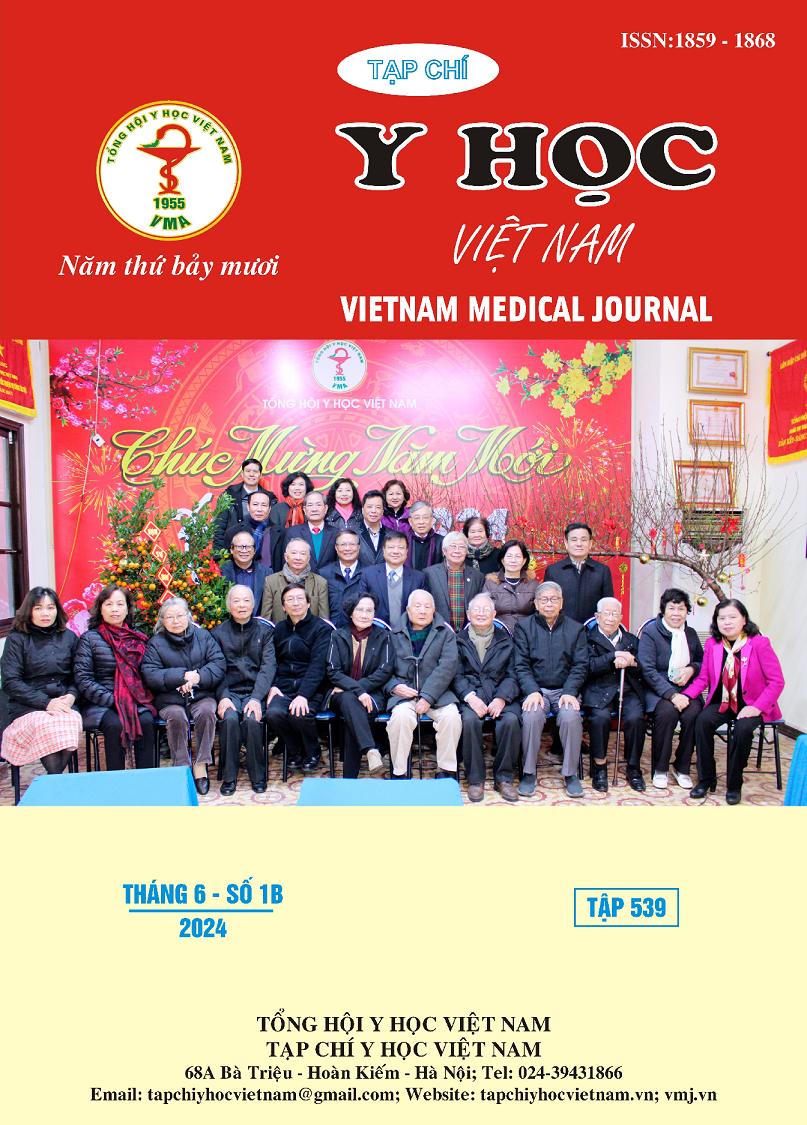COMPLICATION OF ROBOT-ASSISTED RADICALCYSECTOMY WITH ORTHOTOPIC NEOBLADDER RECONSTRUCTION
Main Article Content
Abstract
Introdution: Radical cystectomy with orthotopic neobladder reconstruction is a highly intricate surgical procedure, impacting both the urogenital and gastrointestinal systems. We conducted a prospective assessment of 90-day postoperative mortality and morbidity following robot-assisted radical cystectomy (RARC) using a standardized reporting approach (Clavien–Dindo classification). Methods: Our prospective analysis involved patients undergoing robot-assisted radical cystectomy with orthotopic neobladder reconstruction between November 2020 and October 2022 at Binh Dan Hospital. Postoperative complications within the 90-day period were meticulously documented and categorized based on the modified Clavien–Dindo classification. Results: Among the 48 patients studied, 52 postoperative complications were detected in 23 patients (47.9%). Of these incidents, 9 (17.3%) were categorized as high grade (Grade III or above) and manifested in 8 patients (16.6%). Common complications included urinary tract infections (43.8%), wound complications (10.4%), and paralytic ileus (25.0%). Furthermore, 3 out of 48 patients (6.25%) undergoing intestinal urinary diversion developed ureteroenteric stricture, 2 cases (4.17%) resulted in intestinal neobladder fistula, and 1 case (2.08%) presented gastrointestinal-bowel obstruction. The mean intraoperative blood loss was 335.6ml, mean operative time was 378 minutes, and mean hospital stay was 6.4 days. Conclusions: Most complications after surgery are low grade. However, for all patients who have undergone orthotopic neobladder reconstruction, we recommend closed monitoring, early detection of complications and timely treatment.
Article Details
Keywords
: robot-assisted radical cystectomy, postoperative complication, orthotopic neobladder.
References
2. Nguyễn Phúc Cẩm Hoàng, Trần Vĩnh Hưng, Đỗ Vũ Phương, Văn Thành Trung (2017) "Phẫu thuật robot cắt bàng quang tận gốc, tạo hình bàng quang bằng hồi tràng nối thẳng: báo cáo một trường hợp đầu tiên", Tạp chí Y Dược học, Số đặc biệt tháng 8 - 2017, 217-233.
3. Al-Daghmin A, Aboumohamed A, Din R, et al. (2014). “Readmission after robot-assisted radical cystectomy: outcomes and predictors at 90-day follow-up”. Urology, 83(2):350–356.
4. Chung U, Minyong K, et al. (2019) “Predictors of postoperative complications after robot-assisted radical cystectomy with extracorporeal urinary diversion”. Cancer Management and Research, 11, 5055-5063.
5. Garcia M, Jemal A., Ward E. (2007) "Global Cancer Facts and Figs 2007", American Cancer Society, 24(6), 125-128.
6. Konety B. R, Carroll P. R. (2013) "Urothelial Carcinoma: Cancers of the Bladder, Ureter, & Renal Pelvis", Smith & Tanagho’s General Urology, McAninch J. W., 18 th ed, The McGraw-Hill Companies, 310-325.
7. Nazmy M, Yuh B, Kawachi M, et al. (2014) “Early and late complications of robot-assisted radical cystectomy: a standardized analysis by urinary diversion type”. J Urol. 191(3).
8. Yuh B, Torrey RR, Ruel NH, et al. (2014) “Intermediate-term oncologic outcomes of robot-assisted radical cystectomy for urothelial carcinoma.” J Endourol. 28(8):939–945.


